Is it normal to have pain after a panic attack? Stretches to help relieve chest pain
Did you know that chest pain is a symptom experienced during panic attacks?
Studies estimate that anywhere from 22% to just over 70% of panic attacks are accompanied by chest pain, before and after an attack.
Panic attacks often go unnoticed and untreated in individuals experiencing chest pain, resulting in repeated visits to doctors and significant negative health impacts. Panic attacks can induce chest pain in many ways. Studies show a correlation between panic attacks and increased rates of cardiovascular conditions such as hypertension and cardiomyopathy. It is crucial to identify and address panic disorder in patients presenting with chest pain to prevent further complications and improve overall well-being.
During panic attacks, rapid and shallow breathing, known as hyperventilation, can result in musculoskeletal chest pain. This occurs when the muscles between the ribs, called intercostal chest wall muscles, become strained or go into spasm.
Acute anxiety can cause problems with the movement of the esophagus, known as esophageal dysmotility. This dysmotility can lead to esophageal spasms, which are a well-known cause of chest pain that is not related to the heart.
Here at Physio and Fitness Clinic, our Myotherapists treat lots of patients who suffer from panic attacks and have panic attack hangover symptoms. Pain in the chest and overall body aching is a common after panic attack symptom.
Post Panic Attack Chest Pain Stretches
We have come up with a list of exercises and stretches to help with post panic attack chest pain.
Bent over Row with Dumbbell
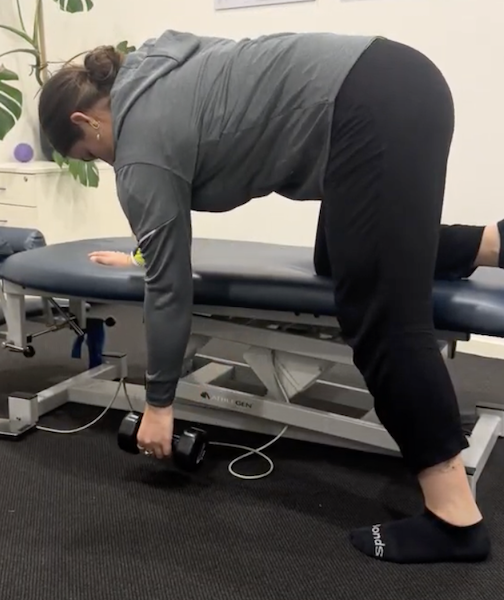
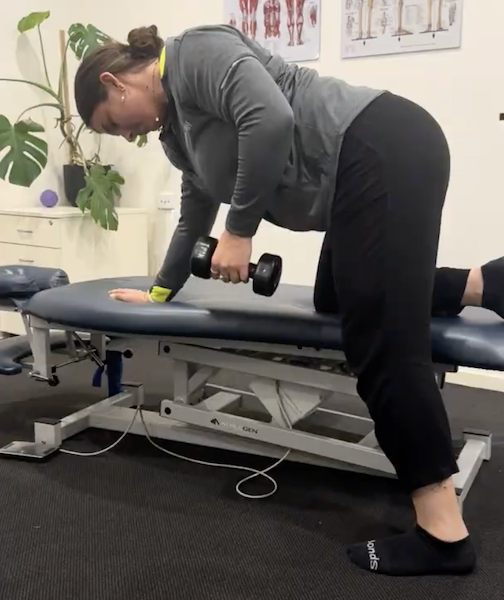
- Begin by positioning the bench parallel to your body. Place your right knee and right arm on the bench for support. Your left leg should be slightly bent and extended behind you, and your left hand should be holding a dumbbell.
- Keep your back straight and core engaged throughout the exercise. This will help maintain stability and prevent strain.
- With your left hand holding the dumbbell, let your arm hang straight down towards the floor. This is your starting position.
- Initiate the exercise by retracting your left shoulder blade and pulling the dumbbell towards your torso. Focus on pulling through your back muscles rather than using your arm strength alone.
- Exhale as you pull the dumbbell upwards, keeping it close to your body and maintaining a controlled motion. Aim to bring your elbow behind you, squeezing your back muscles at the top of the movement.
- Pause briefly at the top of the movement, feeling the contraction in your back muscles.
- Slowly lower the dumbbell back to the starting position, fully extending your arm.
- Repeat the exercise for the desired number of repetitions.
- After completing the set, switch sides.
Lying shoulder retraction exercise
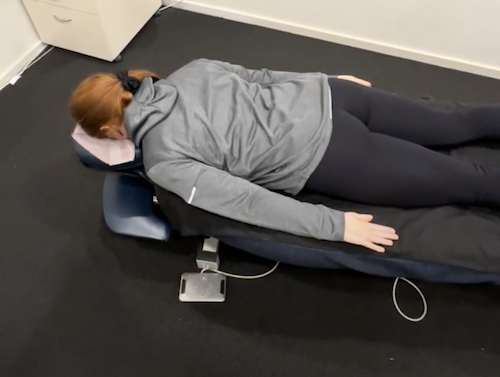
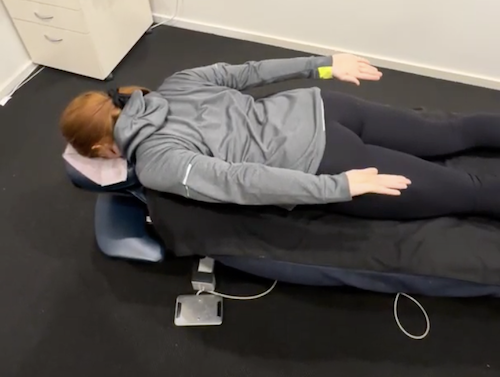
- Lie flat on your stomach on an exercise mat or a bench.
- Extend your arms straight out beside you, palms facing up. Your legs should be extended, maintaining a straight body alignment.
- Engage your core muscles by drawing your belly button towards your spine. This will help stabilise your body during the exercise.
- Begin the exercise by retracting your shoulder blades. Imagine squeezing them together as if you are trying to hold a pencil between them. This movement will draw your shoulders back and down towards your spine, and your hands and arms move up.
- Hold the retracted position for a few seconds, focusing on the contraction in your upper back muscles.
- Slowly release the shoulder retraction and return to the starting position with your arms by your side.
Banded Row
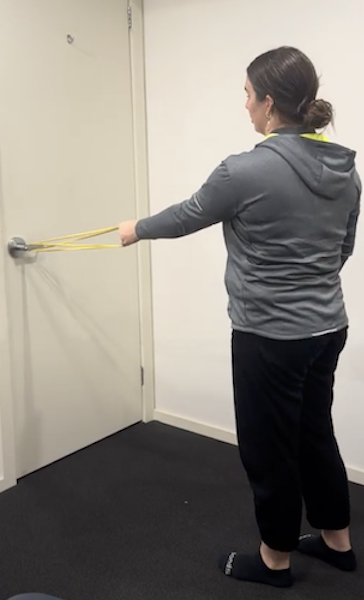
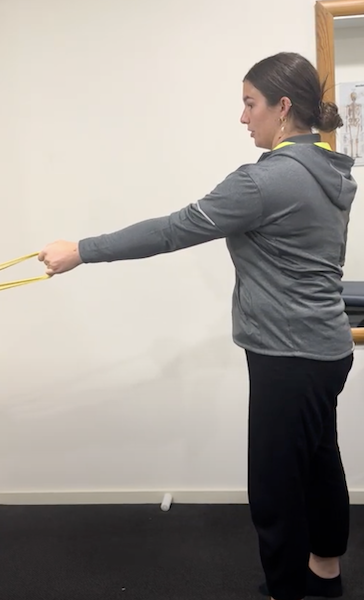

- Begin by securing the exercise band around a sturdy door handle at waist height. Make sure the door is securely closed and won’t open during the exercise.
- Stand facing the door with your feet shoulder-width apart. Grasp the band handles or hold onto the band directly with your palms facing each other.
- Take a step back to create tension in the band, ensuring it is securely anchored to the door handle.
- Keep your back straight, core engaged, and knees slightly bent for stability and proper form.
- Start the exercise by retracting your shoulder blades and pulling your elbows back, squeezing your upper back muscles. Imagine pulling your shoulder blades towards each other.
- As you pull back, focus on engaging your back muscles rather than relying solely on your arms.
- Pause briefly at the peak of the movement, maintaining tension in the band and feeling the contraction in your upper back muscles.
- Slowly release the tension and return to the starting position with your arms extended forward.
Chest Opener on a Towel
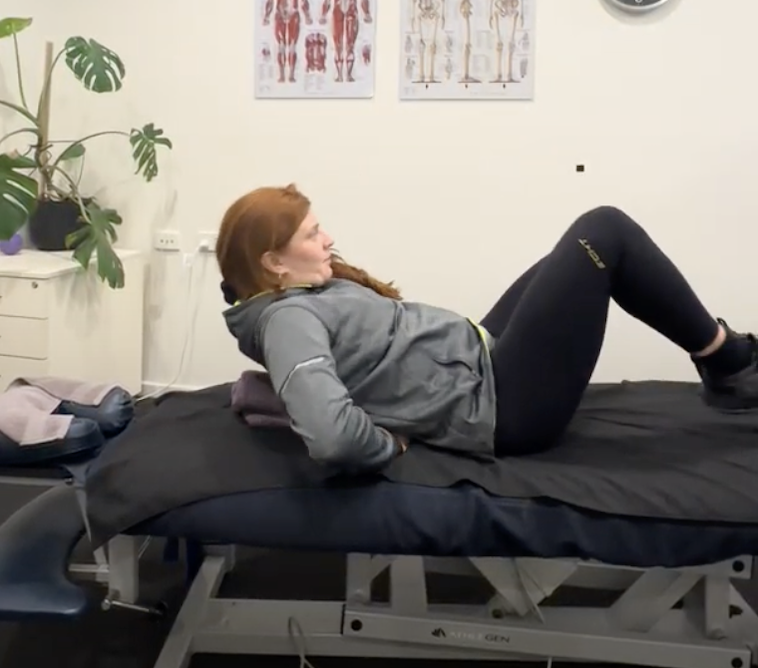
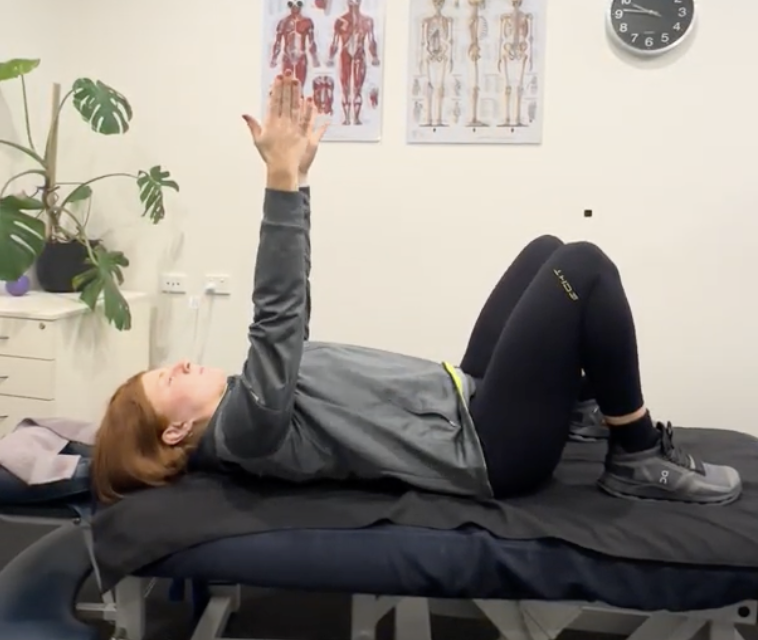
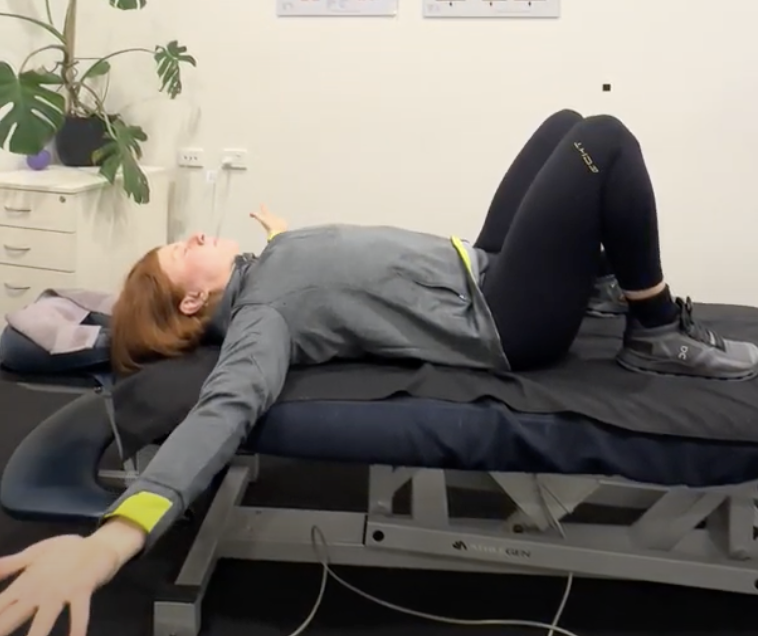
- Gently lay yourself down with the towel down your spine.
- Your head will not be on the towel, so this time it is not supported.
- Your arms should be straight up in front of you.
- Drop arms out in line with your shoulders, to feel a stretch through the chest and pecs then bring them back to the center.
- Repeat.
Check out more info on Chest Openers here.
Cat Cow
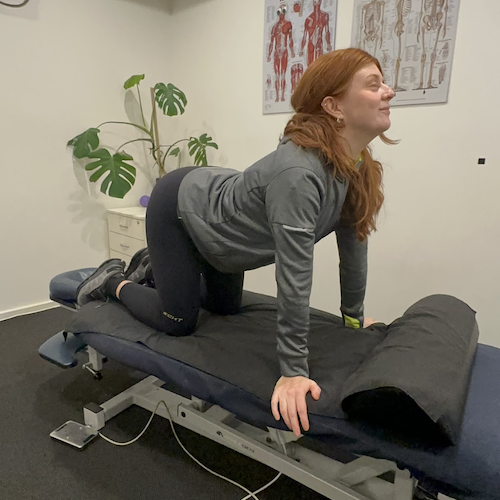
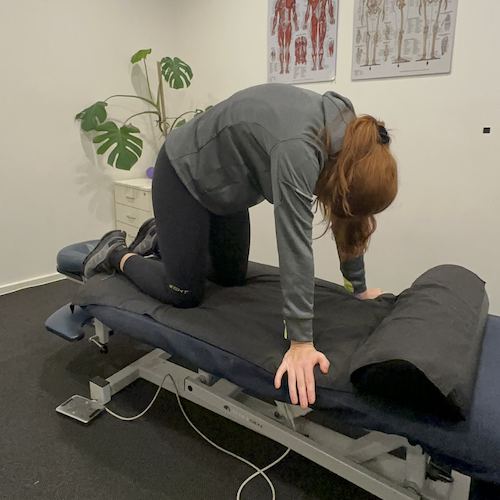
- Start on all fours, with your hands directly under your shoulders and your knees under your hips.
- Begin in a neutral spine position, with your back flat and your gaze straight ahead.
- Inhale deeply and slowly drop your belly towards the floor, arching your back and lifting your tailbone towards the ceiling.
- Allow your head to gently lift, creating a gentle extension through your neck.
- Hold this Cow pose for a few seconds, feeling a stretch in your lower back and abdomen.
- Exhale slowly and round your spine upwards towards the ceiling, like an angry cat.
- Tuck your tailbone under, engage your abdominal muscles, and allow your head to drop downwards.
- Hold this Cat Cow Lumbar pose for a few seconds, feeling a stretch through your upper back and shoulders.
- Repeat this fluid movement between Cow and Cat poses for several rounds, synchronising it with your breath.
- Focus on the sensation of each pose and aim to create a smooth and controlled flow.
Remember, it’s important to listen to your body and avoid any excessive pain or discomfort. If you experience sharp or prolonged pain, consult with a healthcare professional before continuing.
By incorporating non-traditional exercises alongside traditional strength training, you can enhance your overall athleticism, improve functional movement, and reduce the risk of injuries, ultimately helping you achieve your fitness goals.
